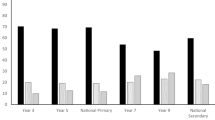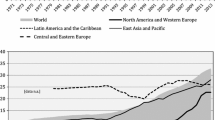Abstract
The establishment of the Fachhochschul sector is regarded as the most significant success story of the last decade in Austrian higher education. This new sector was legally established in 1993 (FHStG) and started to enrol students in 1994. For the academicyear 2000/01, there were 55 Fachhochschulcourses offered with a further 15 alreadyplanned. The sector has about 9,000 students,and has already produced 2,600 graduates. Inonly a few years it has built up a highreputation amongst students, employers, and thegeneral public. This paper looks back to theearly 1990s, when the Fachhochschul policywas designed. It reconsiders some of thearguments and conflicts which at that time werestirred by this reform and its focus is on theinfluence which was exercised by the Britishpolytechnics. The paper will argue that theCouncil for National Academic Awards(CNAA) served as a role model for the Fachhochschulrat (FHR), which is a cornerstonefor the Austrian Fachhochschul sector andit will discuss why – against the odds – thispolicy transfer was successful.
Similar content being viewed by others
REFERENCES
Austria (1992). Diversification of Higher Education in Austria. Background Report Submitted to the OECD. Wien: BMWF.
Brix, E. (ed.) (1998). Civil Society in Österreich. Wien: Passagen.
Brünner, C. (1994). Ein neuer Weg der professionellen Qualitätssicherung: der Fachhochschulrat. In: S. Höllinger, E. Hackl & C. Brünner (eds), Fachhochschulstudien – Unbürokratisch, Brauchbar und Kurz. Wien: Passagen.
Fischer, R. & Melchior, J. (1995). Qualitätssicherungsmechanismen im Fachhochschulbereich. Wien: IHS.
Hegel, G.W.F. (1970). Grundlinien der Philosophie des Rechts (1821). Frankfurt/Main: Suhrkamp.
Mrkvicka, F. & Kaizar, I. (1994). Die Entstehung und Entwicklung von Fachhochschulen in Österreich aus der Sicht der Arbeitnehmer. In: S. Höllinger, E. Hackl & C. Brünner (eds), Fachhochschulstudien – Unbürokratisch, Brauchbar und Kurz. Wien: Passagen.
Lassnigg, L. & Pechar, H. (1988). Alternatives to Universities in Higher Education. Country Study: Austria. Paris: OECD.
Münch, R. (1993). Die Kultur der Moderne. Frankfurt/Main: Suhrkamp.
OECD (1995). Reviews of National Policies for Education: Austria. Paris: OECD.
Pechar, H. (1997). The Funding of Fachhochschulen in Austria, Tertiary Education and Management 3(2), 165–172.
Pechar, H. & Pellert, A. (1998). Managing Change: Organisational Reform in Austrian Universities, Higher Education Policy 11, 141–151.
Pratt, J. (1997). The Polytechnic Experiment, 1965–1992. Buckingham: Open University Press/SRHE.
Pratt, J. & Hackl, E. (1999). Breaking the Mould in Austrian Higher Education, Higher Education Review 32(1), 34–54.
Silver, H. (1990). A Higher Education: The CNAA and British Higher Education 1964–1989. London: Falmer Press.
Author information
Authors and Affiliations
Rights and permissions
About this article
Cite this article
Pechar, H. Accreditation in Higher Education in Britain and Austria: Two Cultures, Two Time-Frames. Tertiary Education and Management 8, 231–242 (2002). https://doi.org/10.1023/A:1016309922084
Issue Date:
DOI: https://doi.org/10.1023/A:1016309922084




